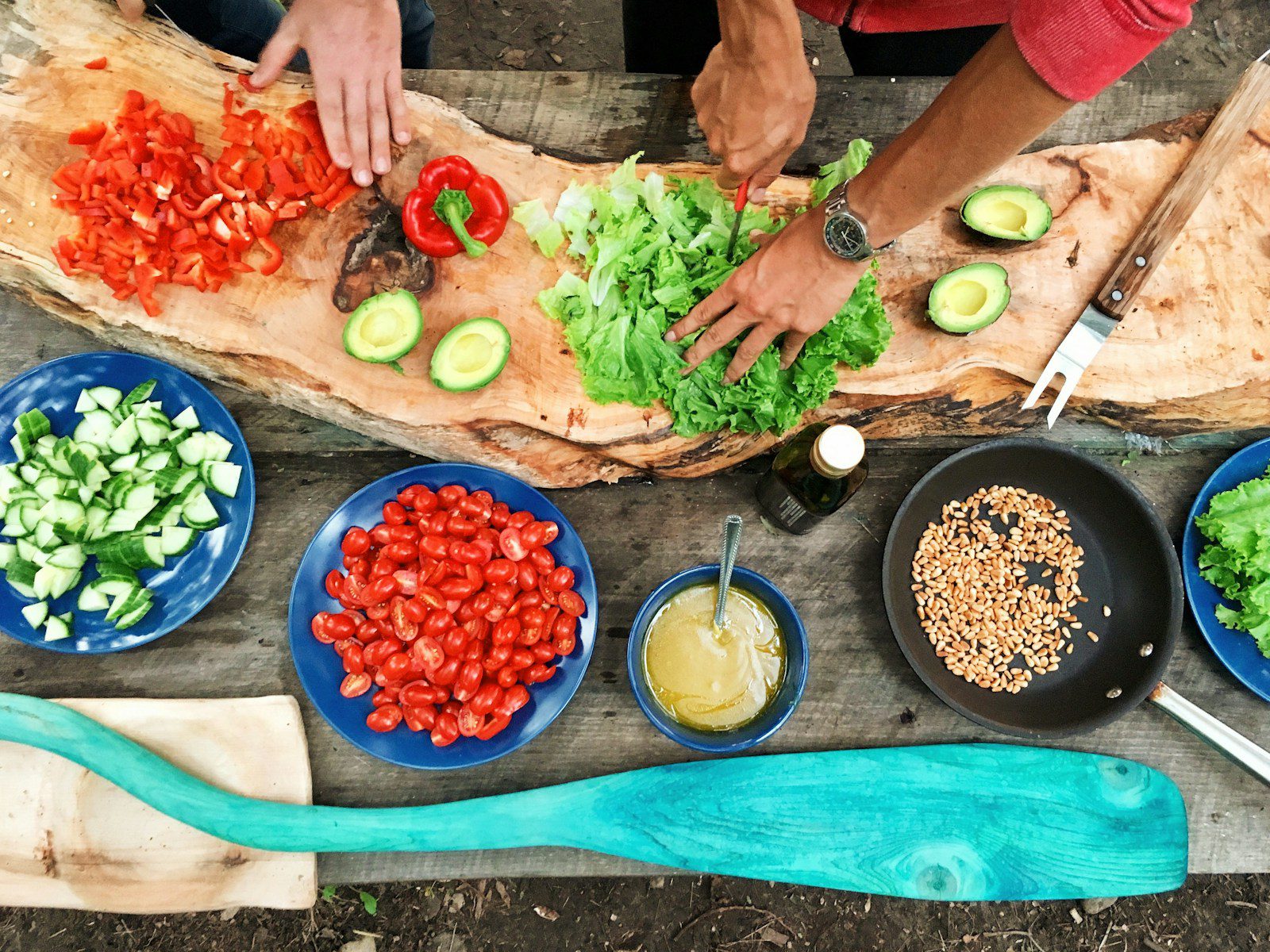Take the Quiz:
Whether you’re an expert culinary artist or a reluctant home chef, cooking for food waste reduction is fun and delicious. Plus, consuming more parts of your food can be healthier, since many peels and seeds are packed with nutrients. With zero waste cooking, you’ll learn how to transform parts of food that are often discarded—like the stems, stalks, and scraps—into delicious meals.
As you dive deeper into your food waste reduction journey, you may notice that cooking with zero waste in mind changes the way you see food. When I started my own efforts to reduce food waste at home, I began to recognize how much time, resources, effort, and care went into putting food on my plate. When I started to see the story behind my food, food became worthy of celebration. Suddenly, every seed, stem, and stalk has a purpose, shifting from a mere afterthought into a valuable ingredient in and of itself.
So grab your spatulas and aprons, and get ready to flex your cooking skills! Below are some tips and resources to help you become a more confident, flexible, and creative zero waste home chef.
Use every part, from root to fruit!
In the restaurant world, cooking with every part of the plant or animal is often called “root-to-stem” or “nose-to-tail” cooking. We usually just call it cooking with scraps. (You can use any of these terms to google delicious zero waste recipes). But the concept is the same: use every part of your food that you can, and throw away (or compost) as little as possible.
These practices are important because when we reduce food waste, we save so much more than just food. We also pay respect to the farmers and food system workers whose labor contributed to producing that food. We honor the lives of animals who have given us meat, milk, and eggs. We appreciate the natural resources — the sunlight, the water, the soil — that transform our plant foods from a few tiny seeds into a delicious meal. And we promote a more equitable food system by not contributing to the growth of landfills in communities who are overly waste-burdened.
Making use of every part of the plant or animal also saves you money. The average American wastes approximately 35% of the food they purchase. That’s the equivalent of buying three bags of groceries and leaving one of them on the ground in the parking lot!
Here are some tips and recipes you can try for root to fruit cooking:
- Freeze vegetable scraps—like onion peels, carrot peels, and celery leaves—and bones to make veggie stock or bone broth.
- The green tops of root veggies, like beets, carrots, and turnips, are delicious blended into pesto or as additions to egg dishes and smoothies.
- Cheese rinds can be whipped up into a delicious fromage fort.
- Pumpkin and squash seeds can be roasted and eaten as a snack or as a topping for granola, salads, and casseroles.
- You can use herbs, onion, and veggie pulp to make falafel.
- Banana peels are eaten in many parts of the world! Try making Zingerman’s Banana Bread which uses the whole banana (peel and all!) or this recipe from Nigella Lawson’s “Cook, Eat, Repeat” that incorporates banana peels into curry.
Past its prime?
Wilted greens, browning avocado, sour milk, stale chips… think they’re too far gone? Think again! Often, these foods aren’t quite ready for the compost bin. No, we’re not saying you should eat moldy fruit or veggies that are clearly rotting. However, many of us have been taught to toss foods upon the first sight of over-ripeness, when in reality many things stay good far beyond that.
Check out this blog post for how to tell when it’s really “too late” to eat food items. In the meantime, here are a few ways to revive your nearly expired and slightly questionable foods:
- Make pancakes with nearly-sour milk.
- Turn stale bread into croutons or pita chips.
- Transform overripe fruits into baked goods, like this fruit crisp
- Make herb butter, herb dip, or pesto with wilted herbs
- Sautee veggies that have lost their crispy bite (try this wrinkly tomato pasta!)
- Submerge wilted greens and lettuce in ice water – often they’ll perk back up!
There are so many possibilities for transforming past-their-prime fruits and vegetables. That’s part of why trying to reduce waste as much as possible can push you to become a more creative and resourceful cook! Food Waste Feast, Zero Waste Chef, and Save the Food all have great recipes for transforming foods at the end of their “useful” life.
Transform your Leftovers
Challenge yourself by transforming tonight’s leftovers into tomorrow’s breakfast, lunch, or dinner! You can use cooked veggies or meats to create all kinds of new dishes. For instance, a saute of broccoli and peppers can be used as a side one night, added to an omelet for breakfast, and then worked into a soup, curry, or casserole later in the week. If you won’t be able to use your leftovers immediately, freeze them to extend their shelf life. Here are a few tips for what to do with leftovers:
- Chop and toss into a pot of fridge-cleanout soup, curry, stew, or pasta.
- Soups and pastas can be made from leftover veggie and meat scraps.
- Fry up your leftover mashed potatoes into potato pancakes.
- Many cultures have dishes made from specific kinds of leftovers. For example in latin cuisine, leftover rice and beans are often refried for the next morning’s breakfast. Here’s a recipe for Peruvian Tacu Tacu that you can use to try out this tip!
- For a quick and easy meal – throw your leftovers on top of some grains (like rice or quinoa), add some raw chopped veggies, and a fried egg (optional) for a leftover grain bowl.
- Blend leftover cooked veggies into a food processor with breadcrumbs and egg for a quick veggie burger.
ACTION ITEM: Join our food waste challenge and send us your recipes or cooking tips you use to reduce food waste and we’ll add to the A2ZERO Community Cookbook. (Bonus points if you send a picture of your creation!) Don’t have any tips or recipes to send in? Pick one of the recipes below and let us know which one you’ll be trying!
ADDITIONAL RESOURCES:
Feeling inspired? Want some more recipes? Check out these cookbooks and articles!
- Cooking with Scraps: Turn Your Peels, Cores, Rinds, and Stems into Delicious Meals by Linsday-Jean Hard (U-M alum & Ann Arbor local!)
- Perfectly Good Food: a Totally Achievable Zero Waste Approach to Home Cooking by Margaret Li and Irene Li
- The Zero-Waste Chef: Plant-Forward Recipes & Tips for a Sustainable Kitchen and Planet by Anne Marie Bonneau
- Zero Waste in Food Cultures and Traditions by Erika Björkskog
- The Everlasting Meal Cookbook by Tamar Adler
Research and content contributions from Azella Markgraf, Sofia Berkowitz, and Bailee Duke and Juna Saito.
SUMMER GAME CODE: ROOTTOFRUIT

